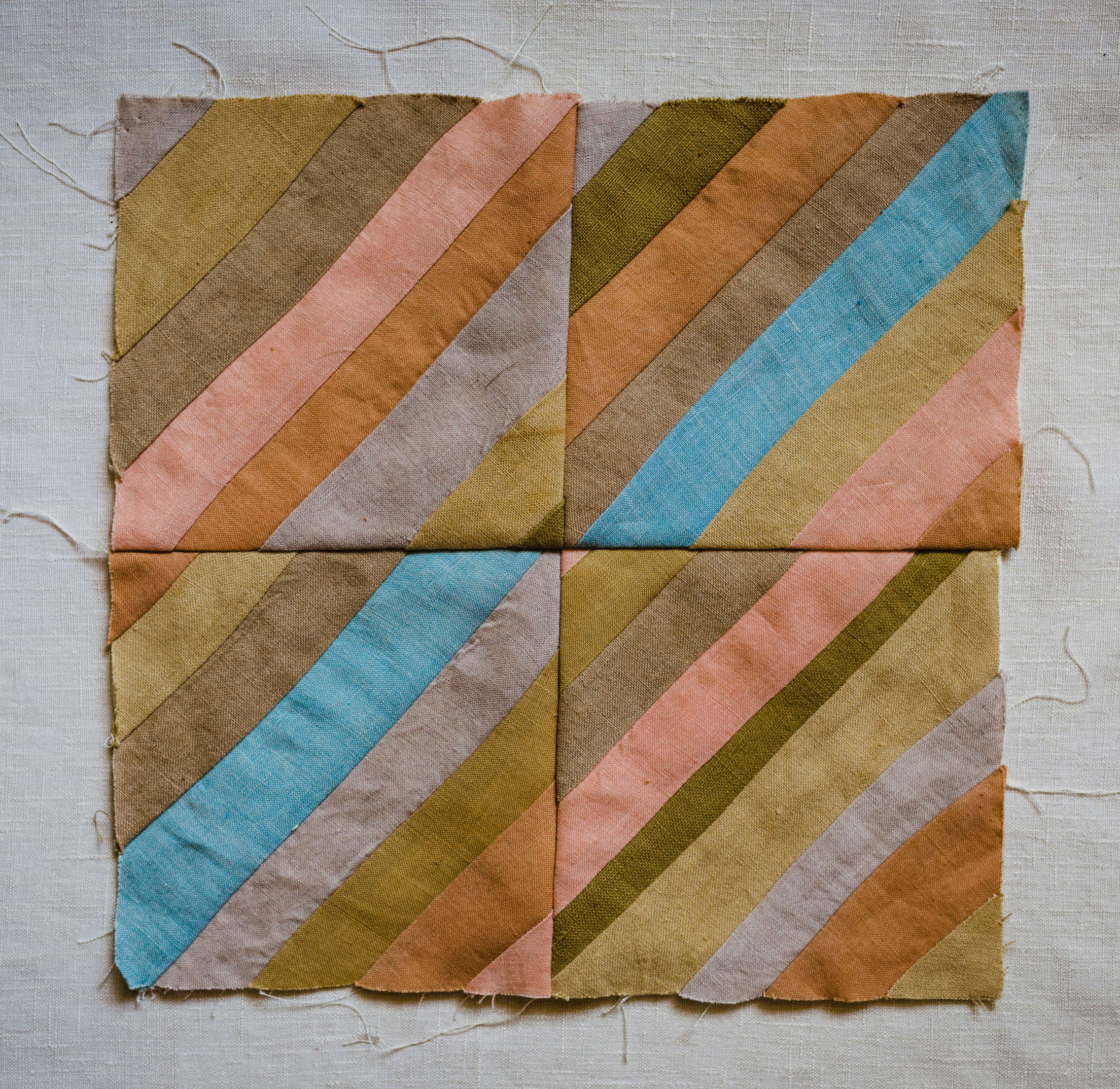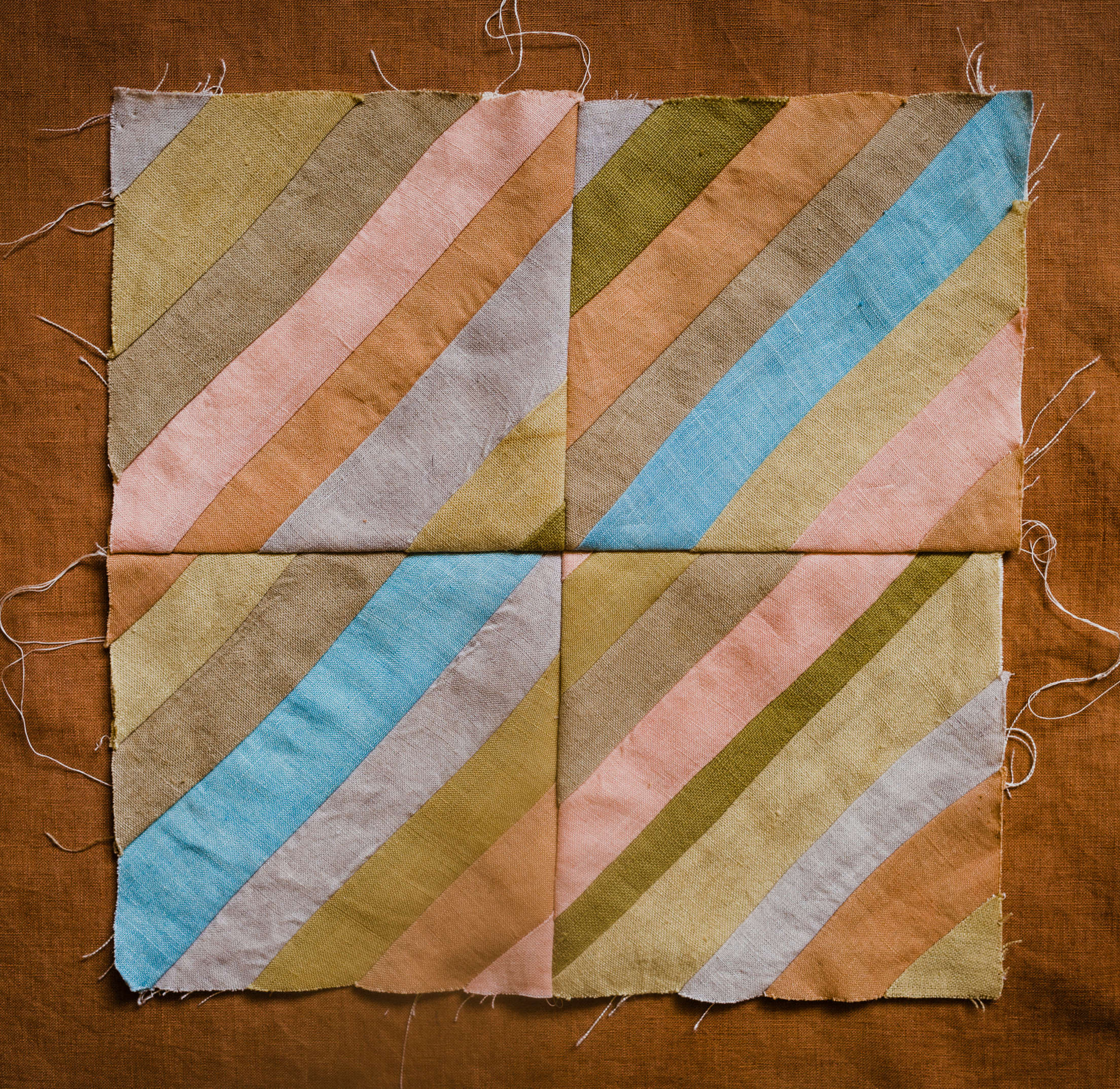Watch full videos
The finished edge of the quilt is called the binding. Like all crafts, there are many different styles and techniques, but I’ll show you my preferred method. You could describe it as a “double-layered binding with mitered corners.”
The first step is to measure your quilt and determine how long your binding will be. I recommend adding an extra 10% onto the measurement of the perimeter. Then select your fabric that you’ll use. I typically use the same fabric used in the quilt. I’ve included some extra material for this in the supplies list. I like to make my bindings out of a single color.
Layout the fabric and iron any wrinkles out. Fold the fabric in half so that it can fit on your cutting mat. Then cut 2.5 inch wide strips out of the fabric. A rotary cutter is helpful here. Instead of cutting the fabric straight across, I cut along a 45-degree angle. This is called the “bias” of the fabric and allows your binding to stretch more easily. This makes for a nicer fit on the edge.
You can compare the length of a strip along the edge of the quilt to get an idea of how many you’ll need. I always cut at least one extra so that I don’t end up short.
Now sew the strips together to create one long piece of fabric. This can be a little unintuitive because you have to align the strips at a perpendicular angle and make sure they’re aligned to compensate for the seam allowance.
Once you have your long strip, iron all of the seams open. Then fold the strip in half and iron it, making sure to keep the seams open on the inside of the fold.






